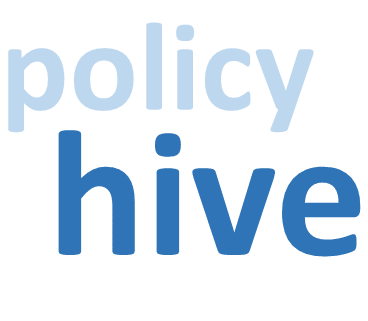Following a long period of growth, the financial sustainability of International NGOs (INGOs) is facing challenging times: stagnating donations by middle-class households hard hit by the un-ending series of crises (Covid-19, Energy crisis, rising inequalities), decreasing public funding and ODA flows, excessive geographic concentration of donors in OECD economies, continuing rise in “restricted” donations and grants, increasing regulatory pressure and, more broadly, an increasingly challenging political environment fuelled by populist and isolationist forces.
INGO funding issues can be regrouped in four priorities: (i) income diversification (both geographic and per type of donor), (ii) efficient financial management & donor engagement, (iii) maximising digital transition, and (iv) addressing the broader political context.
Regarding geographic diversification, INGOs are fairly dependent on high-income economies which creates both opportunities (e.g. resilient middle class societies) but also risks (narrow pool of donors, low GDP growth prospects). Many INGOs draw most of their income from an even more narrow pool of donors: a handful of countries – typically the historical markets where the INGO was established.
The importance of donor income diversification – private individuals, public institutionals, private institutionals – in large part depends on the business model of the INGO and its purpose: policy advocacy, operational delivery (be it humanitarian or development-oriented) or both. An INGO specialised in advocacy and activism, for example, will typically draw funds from private individuals. By contrast, a specialised humanitarian NGO would rely on public funding, and Official Development Assistance (ODA) in particular.
Individual donors have been the main source of income for NGOs. In principle, they offer the best funding model: small, but regular, donations ensuring long term financial sustainability, unrestricted donations (supporting the NGO as a whole, not a specific project) contributing to budget flexibility and harnessing a large supporting basis of citizens contributing to political legitimacy. Yet, the erosion of disposable household income across OECD economies and, more recently, the return of inflation are putting pressure on households. Rise income inequalities and ageing are also changing household behaviour towards charities.
Public funding and ODA also account for a substantial share of NGO funding, although ODA flows to NGOs have been stagnating, if not declining, in the past decade. The growing share of restricted (or earmarked) ODA is also restraining NGOs’ freedom of investment and may create financial problems when indirect costs are not covered by funding.
Private institutional donors, and foundations set up by wealthy individuals in particular, have become a growing source of funding in recent years. This has happened in a context of rising income inequalities, financialization and digitalisation of the economy. Six of the top ten foundations were established in 2000 or after, and accounting for over 60% of all foundations’ flows. Foundations set up by digital tycoons and hedge fund managers account for over half of all foundation flows. Private foundations are attractive because of the comparatively low transaction costs, greater flexibility of funding (compared to ODA) and, of course, their large financial potential. Concerns revolve around their influence over NGOs’ own priority setting.
There are three key aspects to modern NGO financial management practices: (i) engaging current and potential donors (be it individual or institutional donors) and (ii) locking in sustained support and “acquisition” of donors on the longer term (and at a reasonable cost) while (iii) exploiting opportunities provided by digitalisation. This process can be very burdensome and complex, particular for engagement with households and individuals to achieve donor acquisition.
Finally, the broader political context is becoming more challenging for NGOs. Political systems are increasingly polarised and driven by far right or isolationist political movements, contributing to weakening of democratic institutions and making international cooperation and consensus driven processes increasingly difficult to achieve.
Indicative bibliography
- BOND 2021 Squeezed funding, programme cuts and redundancies: NGOs struggle without government support
- BOND 2020 Trends in cross-sector partnering for INGOs
- Chaudhry 2022 The Assault on Civil Society: Explaining State Crackdown on NGOs
- Development Initiatives 2023 Global Humanitarian Report 2023
- Development Initiatives 2022 Private funding for international humanitarian assistance
- EFA 2023 Nonprofit Pulse: Tracking Change in Europe
- Indiana University 2023 2023 Global Philanthropy Tracker Full Report
- Mikeladze 2021 Financial Management Role for NGOs
- OECD 2021 Private Philanthropy for Development – Second Edition
- OECD 2023 The role of philanthropy in financing for development
- OECD 2023 Aid for Civil Society Organisations
- OECD 2023 Funding Civil Society in Partner Countries
- Pledge for Change 2023 Pledge for Change Annual Virtual Retreat
- Tallack 2020 The Existential Funding Challenge For Northern Ingos
- The Grand Bargain 2016 The Grand Bargain
- UNESCO 2021 Emerging roles and risks of philanthropy and other private sector engagement in global education
